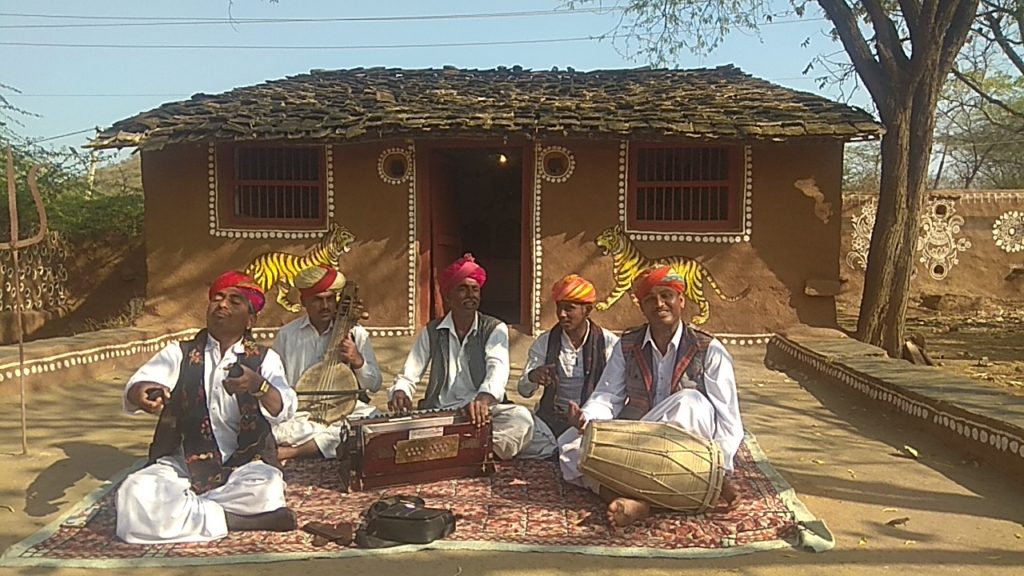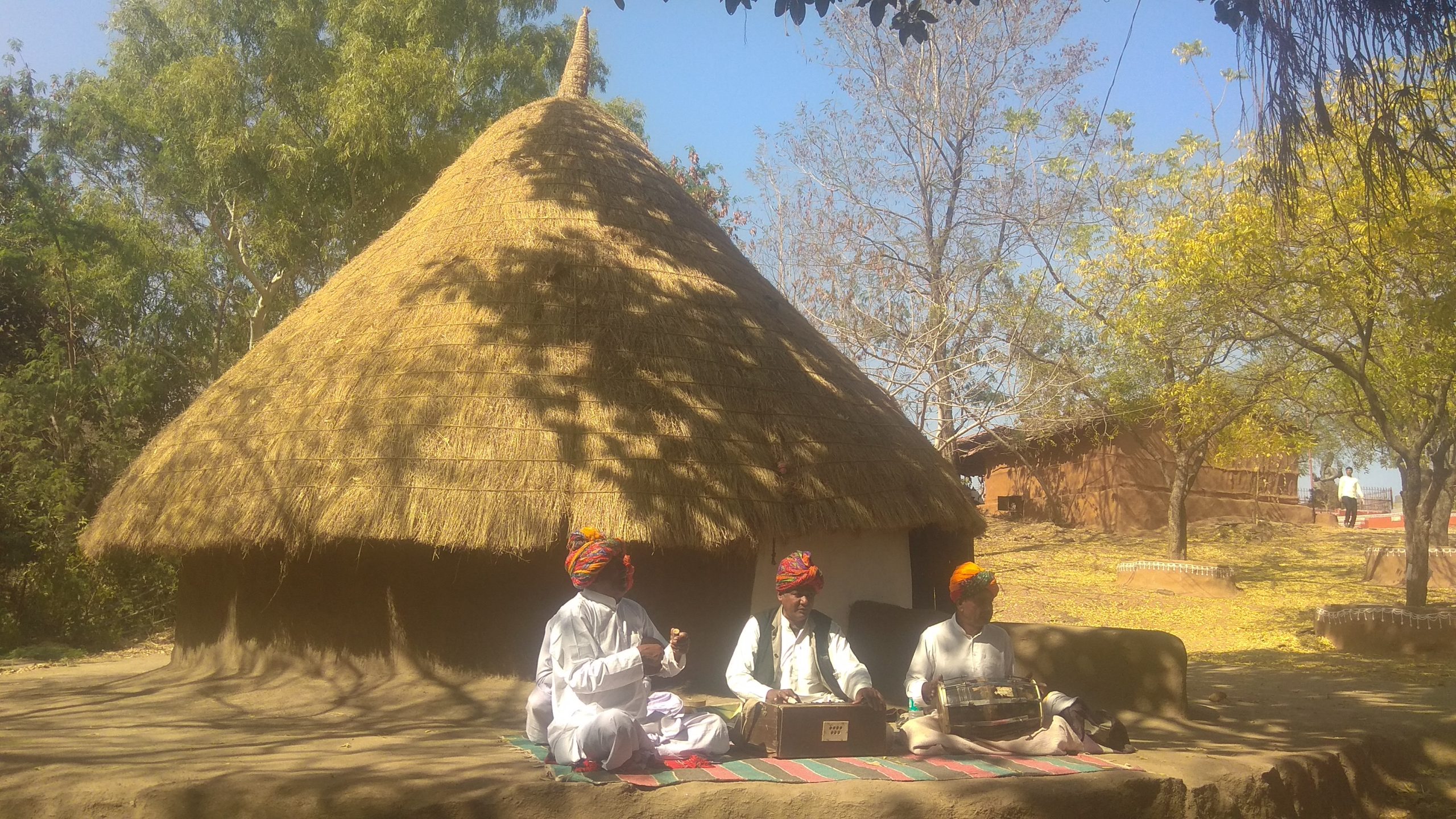Stage lights on performers to set the mood? Uncheck.
A live crowd to cheer musicians as they perform? Uncheck.
Speakers in the performance area? Uncheck.
This is what live musical performances have been like since it reopened in December after the lockdown—without the usual checklists—in Udaipur’s Shilpgram, a traditional art-and-craft centre.
Live concerts may have been missing their energy and colour, but not these folk musicians from Rajasthan’s Barmer.
Their voices aren’t rusty—they rehearsed for hours every day, stuck at home—and their spirits aren’t low.
It does not matter to them if you are an audience of three, five or 100.
Inheritors to an oral tradition of music, these musicians—usually dressed in white clothes and colourful turbans—carry the image of Rajasthan’s folk music and culture.
With their raw voices, and sounds of distinctive instruments, these artists captivate you with their music.

“Khamma Ghani,” they greeted a customary ‘hello’ in Rajasthan’s local language, as you entered the place.
In a quiet and humble setting under a scantily-leafed Neem tree, sat five musicians on a carpet, spread across the yard of a mud hut.
“Would you like to listen to a song?” said the man in the corner, even before you had a chance to revert the greeting.
He held two flat, thin, wooden bars in each of his palms—called kartal—and when he had your attention, he clapped them instantaneously, in a musical beat—a cue for the rest to begin.
“Even a 4-year-old in our home cries in melody.”
Farid Khan
Anwar Khan is the man with kartal in his hands. He belongs to the musical community of Maanganiars from the state’s Barmer district.
Music is a cultural legacy of his family, he said. Farid Khan, another member of this group, is the seventh generation in his family to devote themselves to this art. He has been learning music since childhood.
“Even a 4-year-old in our home cries in melody,” he said. This is what we train to do our entire lives, he added.
For generations, Rajput kings have been the jajman or patrons of their community. India’s Ministry of Culture recognized their art in recent times and sponsored them to perform overseas.
Ustaads or the experts in the field were also felicitated with national awards. Yet, these musicians still depend largely on the patrons.
According to Farid Khan, a major chunk of their incomes come from their performances in weddings, private parties, festivals and social gatherings. They get paid more than a lakh for short-duration concerts from these patrons. A fortnight of cultural festivals across the country pays a meagre ₹7,500 per musician from the Ministry of Culture.
The pandemic put these artists in a tough spot with limits on gatherings.
“If a person sits at home for 12 months, then what will he do?” said Farid Khan.

